Winter puts heat on Phil's shearers

SHEARING season has begun for seasoned sheep farmer Phil Lester. With more than 35 years of experience, Mr Lester’s operation focuses on producing fine wool across three properties with around 90 per cent of his flock consisting of Merino sheep.
This month he is overseeing shearing operations across three properties – Upper Howley Farm in the Central Highlands, Colebrook, and Woodbury.
Originally from a small family farm in Tasmania’s York Plains, Mr Lester has always been drawn to sheep farming and after studying at an agricultural college in New Zealand he returned to Tasmania driven to run his own farm.
“It was a good opportunity,” he said. “I felt if I worked hard, I could get somewhere.”
Fast-forward to now ... the operation shears about 15,000 to 16,000 sheep every year which Mr Lester says keeps everyone very busy.
On early mornings, often under frosty conditions, Mr Lester and his team of expert shearers rise well before sunrise to gather at the shearing sheds, where upbeat music sets a lively atmosphere in the cold.
It’s a long week but Mr Lester says it's a lot of fun.
Preparations for a long day of shearing begin the day before.
“Because of the frosts and the condensation, the sheep need to be housed in the shed the day before shearing starts,” he said.
Mr Lester said that this ensures the sheep’s welfare during the intensive shearing process and so that the sheep are ready for the shearers when they arrive at dawn.
Mr Lester recognises shearing is a physically demanding task and while he used to do some of the shearing himself, he now relies on a team of skilled shearers to do the job, noting their skill and ability to shear many sheep at a fast pace and allowing him to help in other ways.
“It’s a very manually intensive industry and the experts are much quicker and faster,” he said.
“You reach a stage where you realise you can’t do it all, so we’ve found it much better to get the sheep ready for them and to let them to do their job.”
Mr Lester says they gravitate between three and five shearers depending on the property. Usually four shearers at Howley, three at Colebrook and five at Woodbury. Each year the farms produce around 50,000kg of fine Merino wool averaging about 18 microns.
After a few days of shearing, tractors are loaded with bales of wool to head to Nutrien. Mr Lester ensures great wool quality by maintaining an even feed plane throughout the year.
“This year I reckon we’ve fed out about 300 plus tonnes of grain. It’s been a dry year and it’s tied up quite a bit of labour and quite a few weekends as well, but we’ve kept that going and we’ve seen the benefit now because the seasons changing a bit.” Mr Lester says June-July is the best time for shearing.
“It’s the best for the ewes,” Mr Lester explained. “It means when the ewes are lambing, they’ll go and seek shelter whereas if they lambed in full wool, they’d survive but the lambs would die.”
He says shearing at this time ensures a higher success rate in lamb survival. Beyond the practical benefits, shearing season fosters a sense of community and teamwork for Mr Lester.
He said it is rewarding at this time of year to have a staff of 15 – rather than the usual three or so people. He values the camaraderie among the team and the shared dedication to the well-being of the animals.
“It’s more than just a job,” he said. “And as simplistic as it sounds, I get a sense of enjoyment in looking after animals.”
Through his career, Mr Lester has witnessed significant changes, driven largely by technological advancements. Innovations such as ewe scanning, which predict the number of lambs each ewe will birth, and long-acting drenches for parasite control have modernised his sheep farming practices.
“Technology has probably been the thing that has allowed us to get bigger and more efficient but there are still many things that remain the same.” Recent updates at his shearing sheds and properties include utilising updated technology, changing the wool bins, re-doing the floor and putting in new water tanks – all to ensure the business runs as smoothly as possible.
“With any industry if you’ve had enough time to perfect and hone what you’re doing you can build on that,” he said. Mr Lester acknowledges the challenges the industry faces, including fluctuating market prices and shortages of skilled shearers .
“At a time when people are gravitating towards computers and phones, the pool of skilled shearers has dropped,” he said. “Those shearers are at a premium, and their skill is definitely valued.”
Overall, Mr Lester enjoys his work and enjoys the complexities that come with having three properties. “I’ve considered that I’ve never worked at all because although I have, it’s never felt like work,” he said.
The biggest challenge Mr Lester has come across in the past few years was the stress surrounding Covid, but since then things have been on track.
“The industry is forever changing, the last few years have been positive and some of the best that I can remember,” he said. As for the wool market, Mr Lester says it has become more of a niche industry. “I don’t think it has quite the impact it had 40 or 50 years ago,” he said.
“We’ve averaged a recession every six or seven years for the last 80 or 90 years, well now the only period that that hasn’t occurred has been the last 13 years so we’re probably due a difficult time.
“From my perspective the tougher it is the more opportunities that are there, so you’ve always got to stay positive and take advantage of the opportunities that present themselves when things aren’t quite as good.”
Looking ahead, Phil remains optimistic about the future of sheep farming and shearing.
“Shearing offers people a pathway that isn’t university or based solely on academia, so I think that’s an asset for the district, it’s a good industry.” “Hopefully the fibre can continue to sell well enough that all of this can continue.”
As well as producing wool, Mr Lester’s farms run a fat lamb operation to ensure a strong future for the business.
“Wool still has it’s place and with the fat lamb operation we run I think the future is still strong.”
Along with the challenges over the years, Mr Lester has had lots of fun. “
"This is a good lifestyle, it’s a low-risk industry, you can’t lose it all to a frost.”
He is also very grateful for the time and effort put in by the team who make shearing season possible, noting their hard work doesn’t go unnoticed.
“I really appreciate the efforts of the staff and the long hours that they put in over shearing.”
“I’m very grateful for what we’ve done here from starting off as a small farm and building it up.”
“For me, it’s been a wonderful use of my time.”
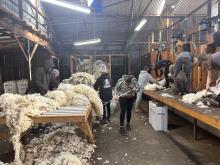
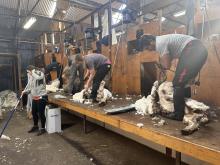
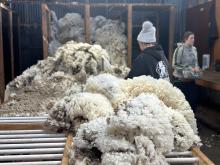
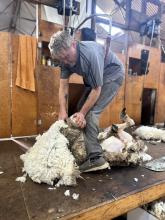
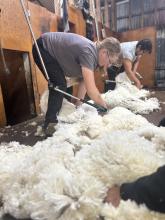
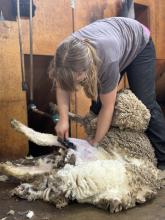
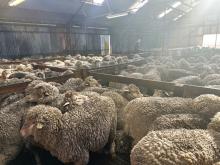
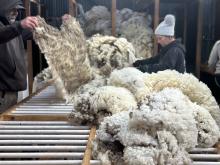

Add new comment